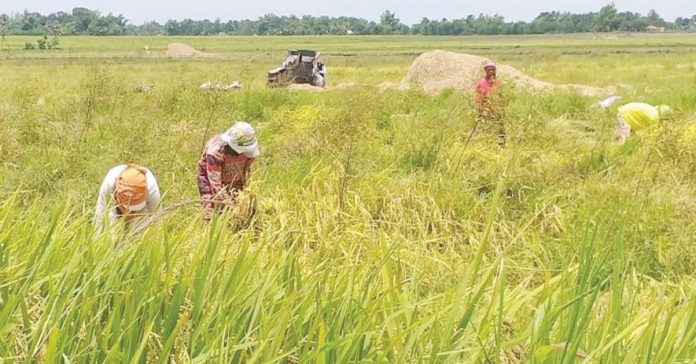
ILOILO City – Western Visayas experienced a substantial decline in palay production during the third quarter (Q3) of 2024, with a total output of 341,844 metric tons (MT).
This marks a sharp 53% drop from the 726,642 MT recorded in Q3 2023, according to the Philippine Statistics Authority (PSA).
Palay, or unhusked rice, is a cornerstone of Western Visayas’ agricultural economy and food security. The crop not only sustains the livelihood of thousands of farmers but also forms the foundation of the region’s rice supply, which is essential for both local consumption and economic activity.
The provincial contributions to the region’s production in the third quarter were as follows:
* Negros Occidental – 126,545 MT (37.0%)
* Iloilo – 98,289 MT (28.8%)
* Antique – 52,448 MT (15.3%)
* Capiz – 46,439 MT (13.6%)
* Guimaras – 11,336 MT (3.3%)
* Aklan – 6,788 MT (2.0%)
Palay production is categorized based on two types of ecosystems:
* Irrigated – areas equipped with facilities that supply water through artificial means such as gravity, pumps, or other powered systems; these areas are less reliant on rainfall, making them more resilient to climatic variations
* Rainfed – areas that rely solely on rainfall for water supply and typically hold standing water; these areas are more vulnerable to weather fluctuations and seasonal changes
In the third quarter of 2024, the total production from irrigated areas reached 211,120 MT (down 41.1 % from 360,236 MT in 2023) while from rainfed areas, 130,724 MT (down 64.3% from 366,406 MT in 2023).
The total harvested area also decreased significantly – from 93,255 hectares in the third quarter of 2023 to 54,911 hectares in the third quarter of this year for irrigated areas; and from 113,271 hectares in the third quarter of 2023 to 40,100 hectares this year.
The harvested areas by province were:
* Negros Occidental – 32,619 hectares (34.3%)
* Iloilo – 29,307 hectares (30.8%)
* Capiz – 13,678 hectares (14.4%)
* Antique – 13,268 hectares (14.0%)
* Guimaras – 3,774 hectares (4.0%)
* Aklan – 2,365 hectares (2.5%)
The drastic drop in palay production could indicate the need for strategies to mitigate dependency on rainfall and improve irrigation systems, as rainfed areas are particularly vulnerable to climatic conditions.
This decline could potentially affect food security in the region, and thereby emphasize the importance of support for farmers and sustainable agricultural practices./PN



